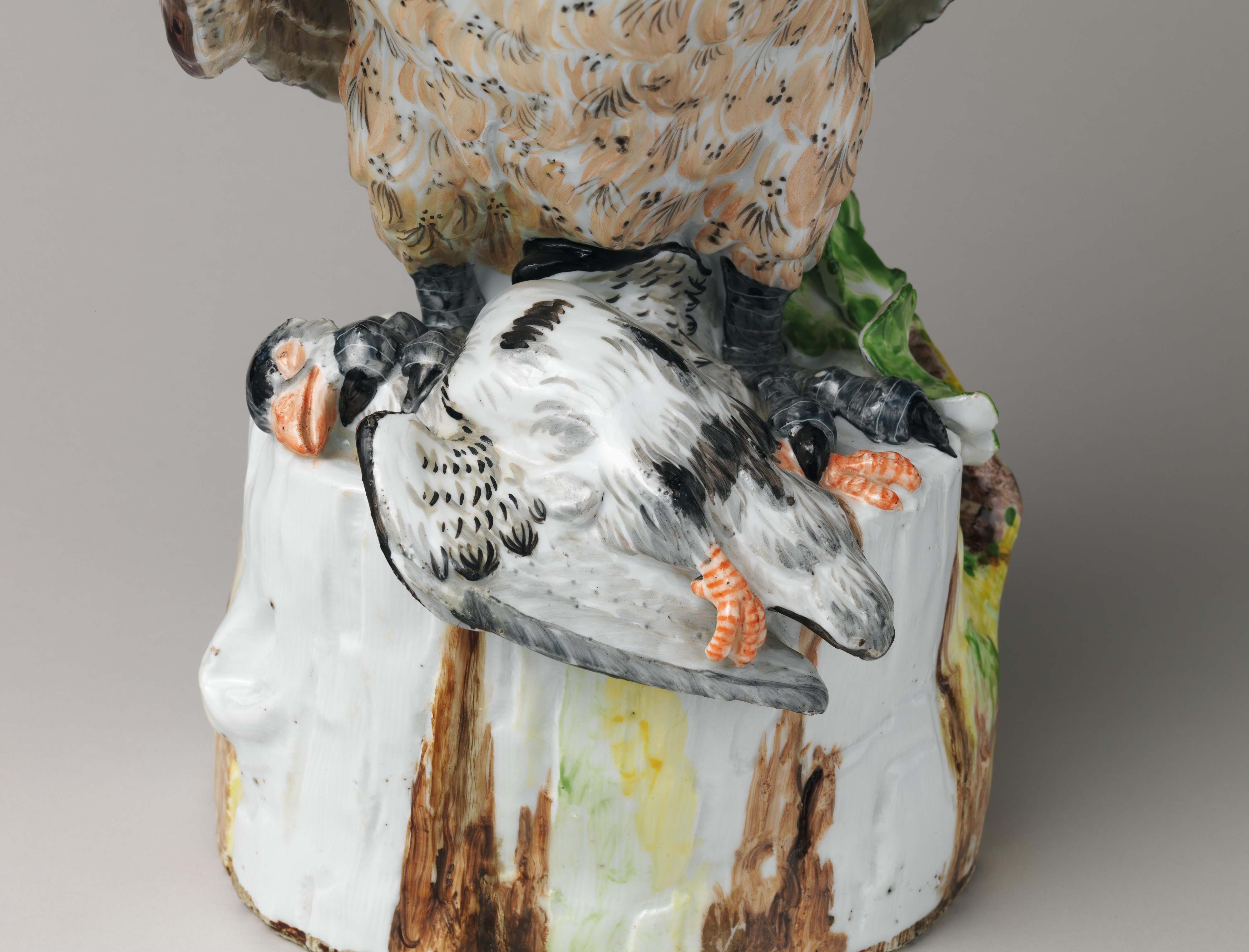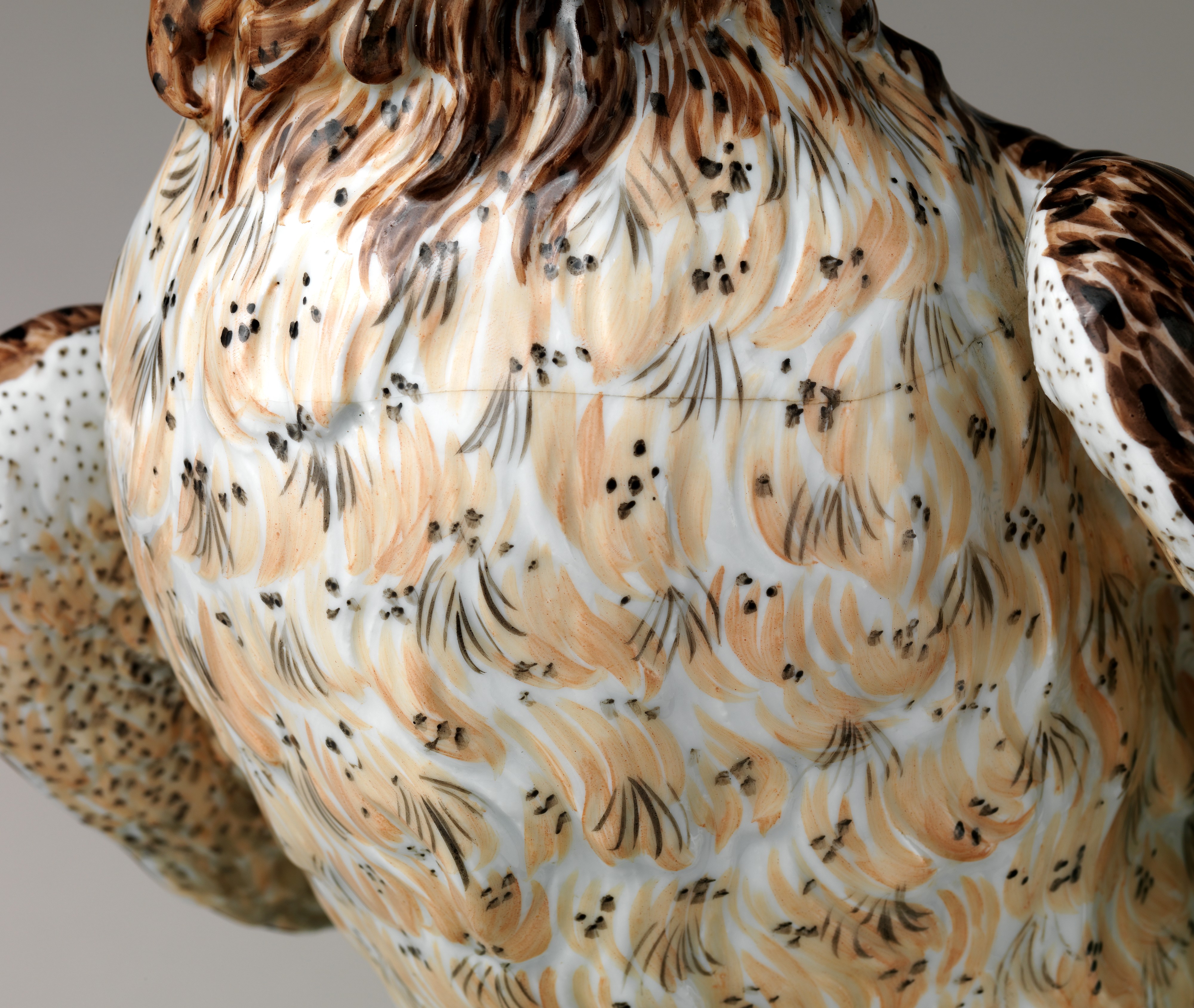Eagle owl
Manufactory Meissen Manufactory German
Modeler Johann Friedrich Eberlein German
Not on view
This figure of an eagle owl belongs to a large group of porcelain mammals and birds ordered for one of the Saxon royal palaces in Dresden, Germany. Known as the Japanese Palace, the building was intended to house the vast porcelain collection of Augustus II (1670–1733), the elector of Saxony and King of Poland. Augustus was a voracious collector of both Chinese and Japanese porcelains in the early eighteenth century, and his interest in Asian ceramics led to his establishment of the Meissen factory near Dresden in 1710. The early production at Meissen was strongly influenced by Augustus’s Chinese and Japanese porcelains, and the designs for the interiors of the Japanese Palace incorporated both Asian and Meissen examples.
In 1730, Augustus initiated a commission for large-scale animals that would be displayed in the Japanese Palace. The original order called for almost six hundred creatures in sizes approximating, when possible, the subjects’ true dimensions. Given the scope of the commission, the scale of the sculptures, and the complexity of the required modeling, this undertaking had no precedent in the medium of porcelain in either Asia or Europe. The figures were originally to be painted in naturalistic colors to enhance the sense of realism, but it was soon discovered that the additional firing required for the enamel colors subjected the largest sculptures to excessive risk of cracking or other technical problems. Among the many mid-sized sculptures that were decorated with enamels is this eagle owl clutching a dead dove. The modeler Eberlein has imbued the sculpture with animation and a sense of presence not only through the angle of the owl’s head and its expressive gaze, but also by depicting a specific moment in time, in this case just after it has caught its prey. This example was one of five eagle owls recorded in the Japanese Palace in 1736, but is the only one to have survived intact to the present day.
Due to rights restrictions, this image cannot be enlarged, viewed at full screen, or downloaded.
This artwork is meant to be viewed from right to left. Scroll left to view more.




